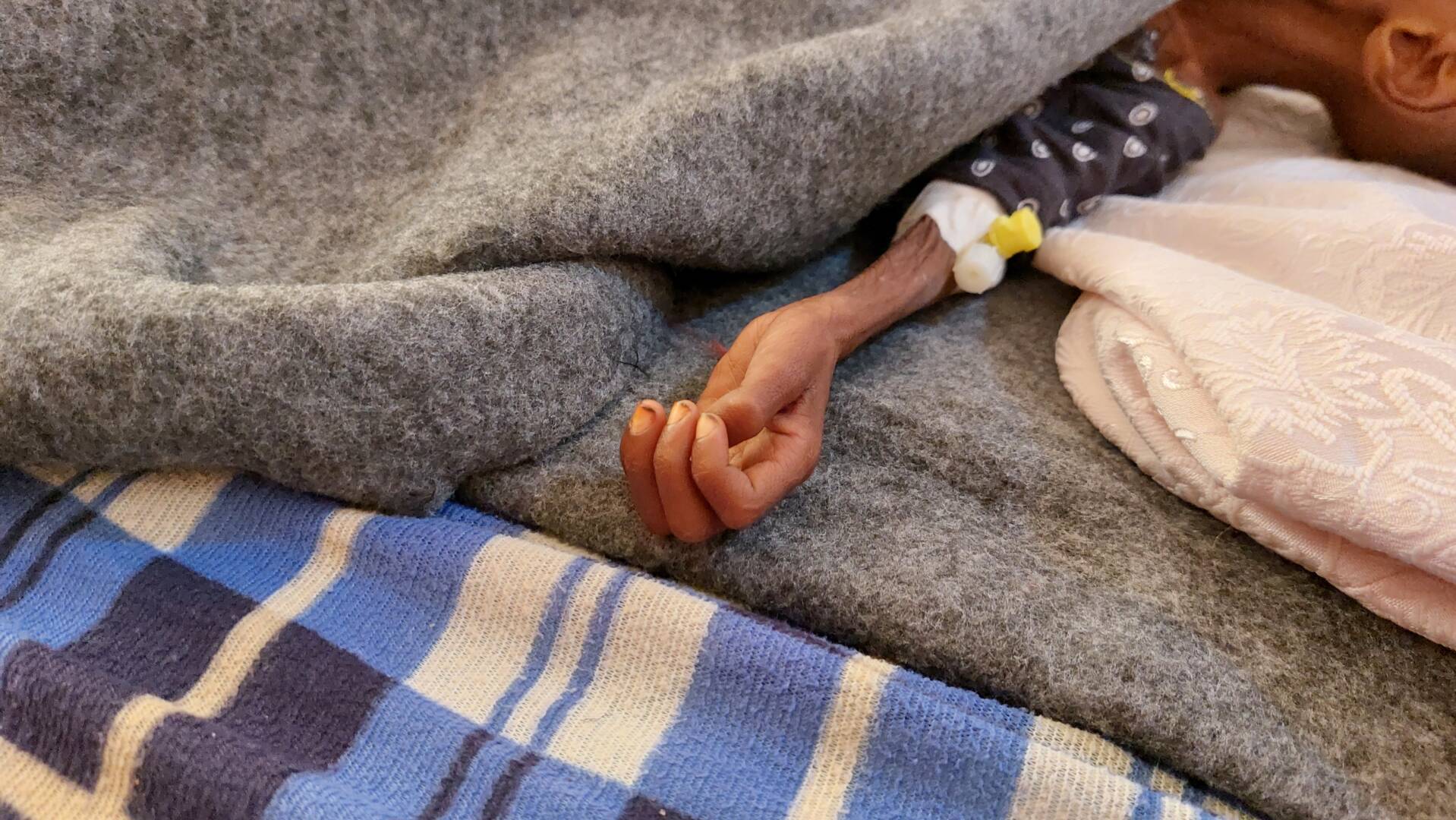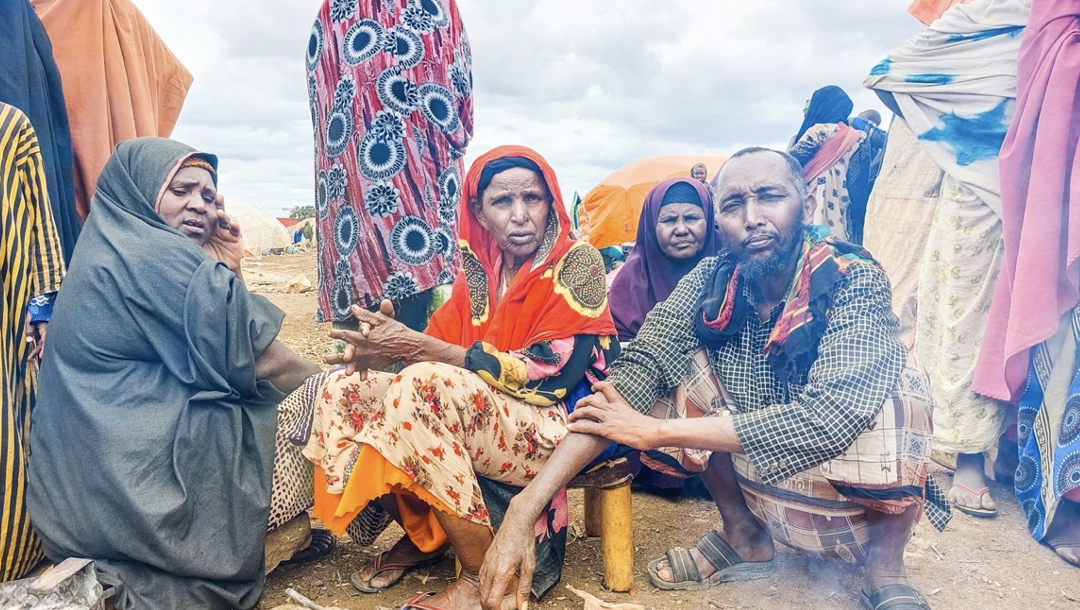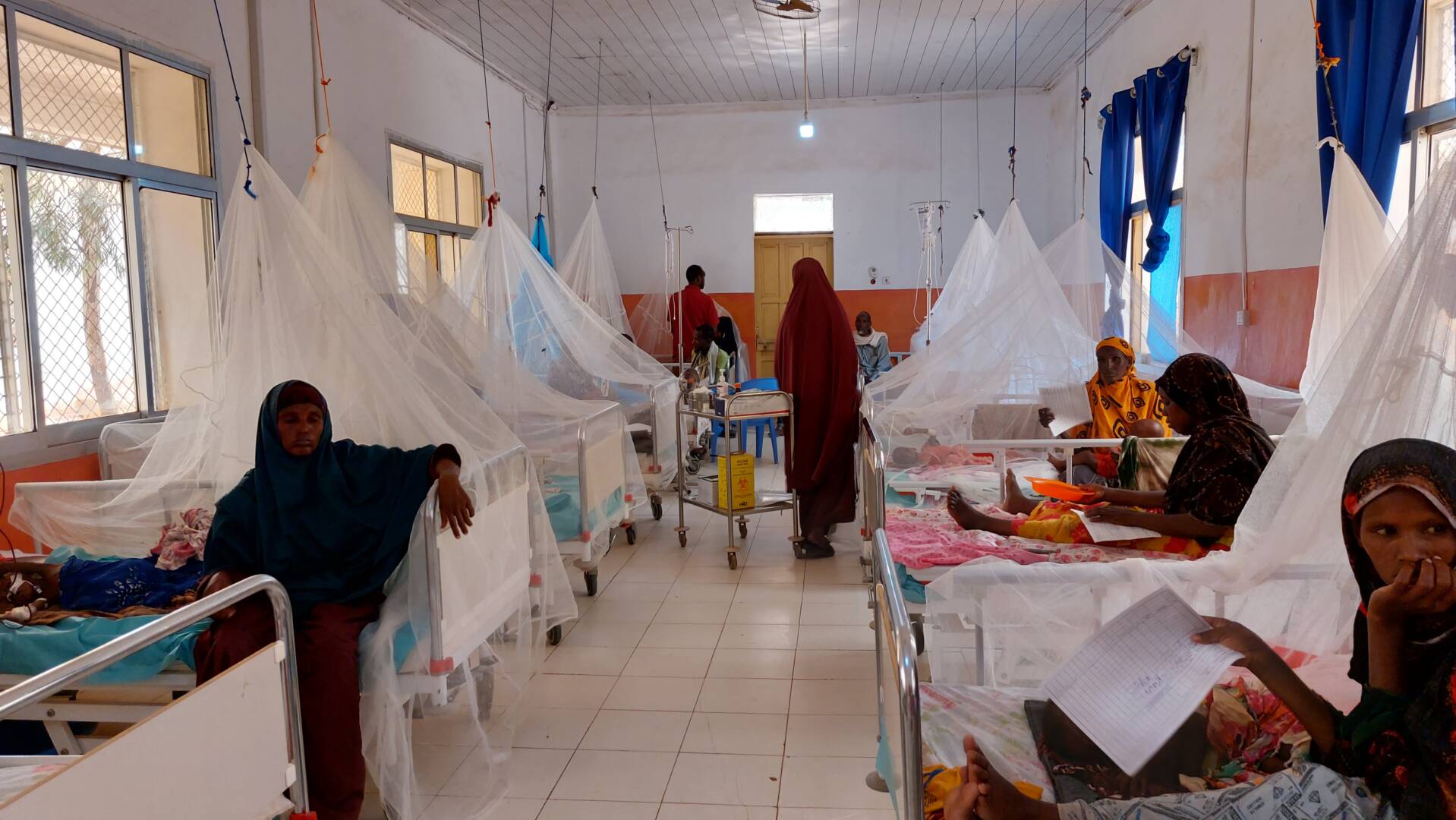Gwayi Patrick is an emergency communications specialist with World Vision in Somalia, where a devastating hunger crisis is spreading across the country and throughout the Horn of Africa. Gwayi has years of experience in humanitarian assistance and television media production in Kenya. He sees many opportunities to serve God in Somalia and is grateful God planted him there.
***
Having just served a six-month deployment in emergency communications in Somalia, nothing could have prepared me for the real-life emergency that unfolded before my eyes.
In Somalia, a cycle of disasters — natural and manmade — has been going on for decades. More than 8 million Somalis (half of the country’s population) are facing extreme hunger, and more than 1 million people have fled their homes and are displaced due to persistent drought and conflict. These numbers are rising.
Traveling across Somalia isn’t easy: Not even a ride in a 4X4 vehicle will guarantee a timely and safe arrival at your destination. Most roads are bumpy, dusty, and thickly dotted with dense, grey tufts of drying desert shrubs.
Driving on these roads, you’re bounced up and down and shifted like a weathervane in a storm. Harsh travel conditions underpinned the experience of most journeys as we headed to the hard-to-reach areas with life-saving humanitarian aid for the most vulnerable.
My job was to broadcast the drought emergency: getting vital information to the people who needed it most and raising awareness of the crisis unfolding in Somalia through media content.
On those trips, I encountered stories that sent me on an emotional ride, like riding a roller coaster.

Desperate mothers
As yet another famine knocks on Somalia’s door, children are most affected — at the highest risk of malnutrition, starvation, and death.
Two-year-old Fadumo Mohammed was in critical condition at the Bay Regional Hospital in Baidoa, Somalia. Her organs were not receiving enough blood due to a lack of nutritious food, causing her to go into shock.
My heart broke as I looked at her wasted body. There was thunder in my thoughts, despair coursing through my blood, and a numbness clouding my eyes.
Too weak to move, she could only roll her eyes, which looked like they were almost falling out from her eye sockets. Quietly she stared. I turned to look away, to avoid a direct stare, and my eyes met a line-up of beds all occupied with children in the same state, if not worse. The hospital was overcrowded, with pints of blood hanging from posts at most beds and medical machines beeping from every inch and corner.
With the help of a local journalist, we talked with one mother who had a child in the hospital, and she told me about their dire situation. Her words shook me. “We’re lucky to have made it [to Baidoa],” she said as she described the desperation among families fighting to survive.
There would be more stories of desperation. Hunger is cruel, manifesting so strongly that I saw it unfolding before my eyes.

Dahabo’s dilemma
Drought and food insecurity forced 70-year-old Dahabo Ali and her family to flee their farm in Dinsoor District, a town in Somalia’s southwestern Bay region. They left their community after hunger became unbearable. The rains had failed for another season, and they lost everything, including their livestock.
Staying in Dinsoor was staring at death. With little energy left, they risked it all and trekked for three days to Baidoa, about 70 miles. Dahabo divided her family into small groups to hide signs of leaving town. Others in the area took this risk too, as staying was not an option. After regrouping beyond the borders of Dinsoor, they started their journey together. They joined groups of people on the move in search of food, water, and shelter. A mass migration ensued to Baidoa.
Dahabo’s eldest son said he witnessed three people, two women and a man, perishing on the way because of hunger. They weren’t accorded a decent burial. Dahabo also saw a woman giving birth on the side of the road.
Now settled in a camp for displaced people, they’re seeking humanitarian assistance. So far, no help has arrived, but it’s far better waiting at the camp than back home. Her sons can go and gather firewood and sell and buy beans to eat once a day.
Baidoa is receiving an influx of displaced people from surrounding districts, all forced to migrate because of conflict and rising food insecurity. This migration reminds me of how Jacob sent his children to Egypt during the drought.
“When Jacob learned that there was grain in Egypt, he said to his sons, ‘Why do you just keep looking at each other?’ He continued, “I have heard that there is grain in Egypt. Go down there and buy some for us, so that we may live and not die.” —Genesis 42:1–2 (NIV)
Egypt represents a place of bondage and captivity, but it always seems to have better promise than the current situation. Parents don’t desire to send their family into captivity, but hunger will force them to make those desperate choices. The children of Israel ended up in captivity in Egypt for 430 years.
Parents still must make heartbreaking choices to fend off hunger for their families, from arranged marriages of their underaged daughters to ease the family’s financial burden, or denying children from stepping foot in a classroom, instead turning them to the streets to polish shoes or labor away the day to bring home food.
Giving leads to provision
Feeding the hungry is a theologically significant miracle in the ministry of Jesus. He knows how it feels to be hungry (see Luke 4:1–14). Feeding the hungry and hearkening to the needs of the poor and vulnerable are core demands of Christianity. In 2 Kings 4:42–44, we read of Elisha feeding hundreds with the first fruits he had received from the people according to the law of Leviticus.
A man came from Baal Shalishah, bringing the man of God twenty loaves of barley bread baked from the first ripe grain, along with some heads of new grain. “Give it to the people to eat,” Elisha said. “How can I set this before a hundred men?” his servant asked. But Elisha answered, “Give it to the people to eat. For this is what the Lord says: ‘They will eat and have some leftover.’” Then he set it before them, and they ate and had some left over, according to the word of the Lord. —2 Kings 4:42–44 (NIV)
When Baal Shalisha brought his gifts to the man of God, the prophet asked that the bread should be given to the needy people, but his servant observed the bread to be too little for 100 men. The prophet insisted. With the understanding of the Scriptures, “they will eat and have some left over” the servant did as instructed. Similarly, when Jesus’ disciples ate, indeed, they were full and had leftovers.
Drought and hunger are not new; as in the above Scriptures, we see they are ancient. They’re a tool the enemy has mastered, and not even Jesus was spared.
Light is the best way to defeat the prince of darkness, and light is knowledge. During these challenging times, let’s use the light we have to overcome the enemy as Jesus did. The light is Jesus, and His commandment is simple: Love. And when you love, you give: “For God so loved the world that he gave …” (John 3:16) and “[Jesus] had compassion on [the crowd]” when he fed the five thousand (see Matthew 14:31–21).
From the above verses and as Christians, we see that we make the first and necessary steps of faith through giving instead of doing nothing.
We dare not look away from the situation in Somalia.
If we move by faith and share the little we have, the grace of God will engulf the effort. God does not despise our imperfect efforts or see them as insignificant. He works collaboratively, by taking our gifts — and blessing them to increase.
This article first appeared on Christianity Today’s The Better Samaritan blog. It has been slightly edited here.
